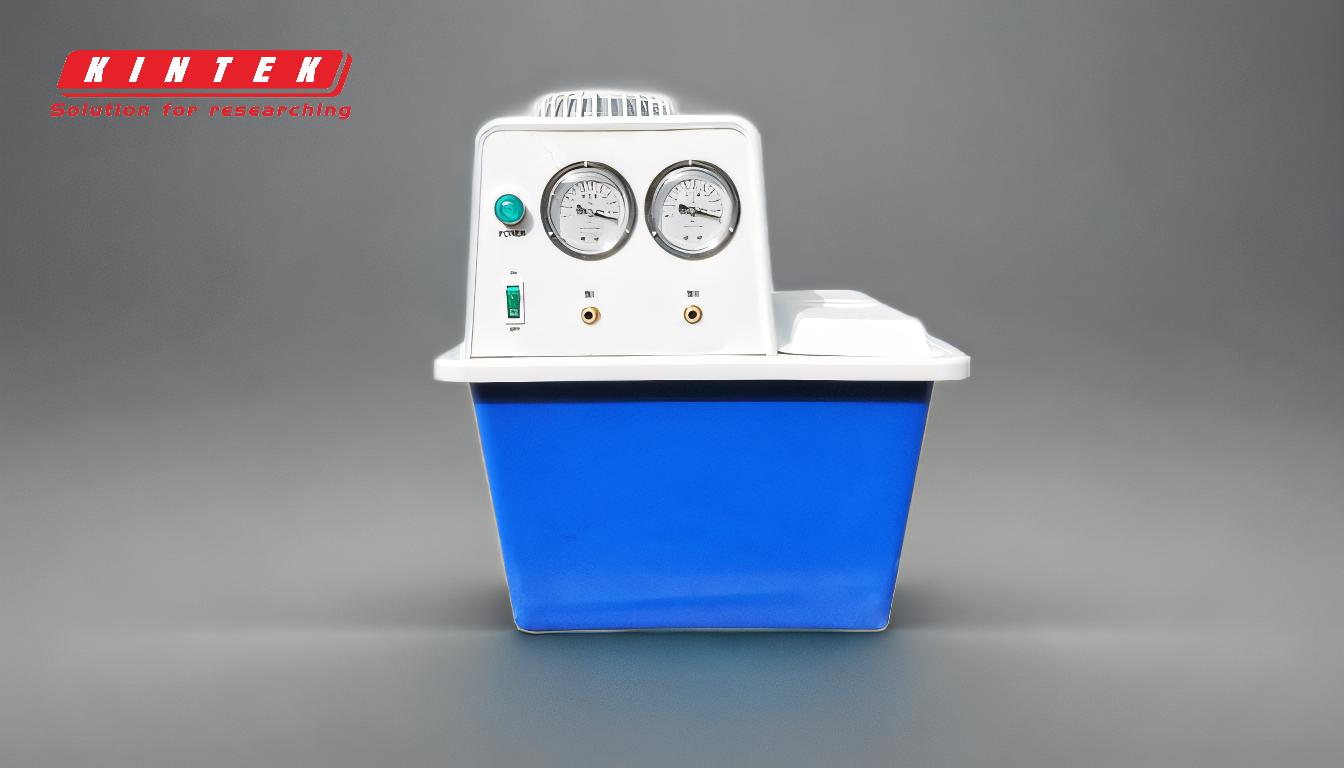A vacuum pump in science is a device that removes gas molecules from a sealed volume to create a partial or full vacuum. It is widely used in various scientific and industrial applications, such as material deposition, chemical synthesis, and analytical instrumentation. Vacuum pumps are essential for processes like sputtering, plasma generation, and sample preparation, where controlled environments free of air and moisture are required. They come in different types, including rotary vane, diaphragm, and turbomolecular pumps, each suited for specific pressure ranges and applications. In laboratories, lab vacuum pumps are critical for tasks like degassing, filtration, and creating low-pressure conditions for experiments.
Key Points Explained:

-
Definition and Function of a Vacuum Pump:
- A vacuum pump is designed to remove gas molecules from a sealed chamber to create a vacuum. This is achieved by mechanical, chemical, or physical means, depending on the type of pump.
- In scientific applications, vacuum pumps are used to create controlled environments for processes like sputtering, plasma generation, and chemical reactions.
-
Applications in Scientific Processes:
- Sputtering and Thin Film Deposition: In processes like RF-PECVD and arc deposition, vacuum pumps are used to maintain low-pressure environments where plasma or ionized particles can be directed onto substrates to form thin films.
- Sample Preparation: For techniques like the KBr pellet method, vacuum pumps are used to degas the sample mixture, ensuring the removal of air and moisture before pressing into pellets.
- Analytical Instrumentation: In XRF technology, vacuum pumps are sometimes used to create a low-pressure environment for better detection of characteristic X-rays.
-
Types of Vacuum Pumps:
- Rotary Vane Pumps: Commonly used for rough vacuum applications, these pumps are reliable and cost-effective for general laboratory use.
- Diaphragm Pumps: Ideal for applications requiring oil-free operation, such as in cleanrooms or when handling sensitive materials.
- Turbomolecular Pumps: Used for achieving high vacuum levels, these pumps are essential in advanced scientific research and semiconductor manufacturing.
-
Importance in Laboratory Settings:
- Degassing: Vacuum pumps are used to remove dissolved gases from liquids, which is crucial for experiments requiring pure solvents or reagents.
- Filtration: In vacuum filtration, pumps create a pressure differential that drives the filtration process, separating solids from liquids efficiently.
- Environmental Control: Maintaining a vacuum is essential for processes like pyrolysis, where combustible gases are recycled, or in ashing furnaces, where stable temperatures are required.
-
Integration with Other Systems:
- Vacuum pumps often work in conjunction with other equipment, such as vacuum chambers, plasma generators, and analytical instruments, to ensure optimal performance.
- For example, in a syn-gas recycling system, vacuum pumps help maintain the necessary pressure conditions for efficient gas recycling and reactor heating.
-
Maintenance and Considerations:
- Regular maintenance is crucial to ensure the longevity and efficiency of vacuum pumps. This includes checking for leaks, replacing worn-out parts, and ensuring proper lubrication (for oil-based pumps).
- The choice of a vacuum pump depends on factors like the required vacuum level, the nature of the gases being handled, and the specific application.
In summary, vacuum pumps are indispensable tools in scientific research and industrial processes, enabling precise control over environmental conditions and facilitating a wide range of applications. Understanding their types, functions, and maintenance requirements is essential for selecting the right pump for specific laboratory needs.
Summary Table:
| Aspect | Details |
|---|---|
| Definition | A device that removes gas molecules to create a vacuum in a sealed chamber. |
| Key Applications | Sputtering, plasma generation, sample preparation, degassing, filtration. |
| Types | Rotary vane, diaphragm, turbomolecular pumps. |
| Importance in Labs | Essential for controlled environments, degassing, and filtration processes. |
| Maintenance | Regular checks for leaks, part replacements, and proper lubrication. |
Need the right vacuum pump for your lab? Contact our experts today for personalized recommendations!








